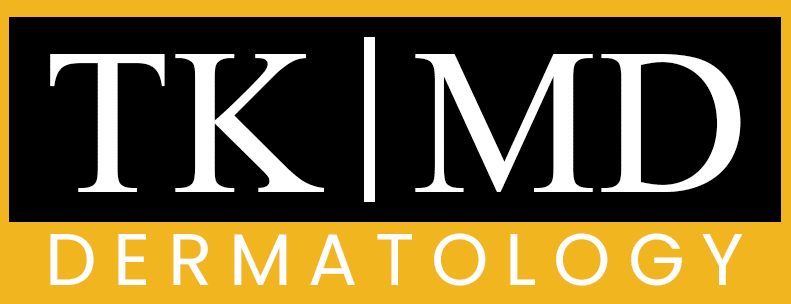Shingles, also known as herpes zoster, is a viral infection that can have a profound impact on our skin and overall well-being. It is caused by the reactivation of the varicella-zoster virus, which remains dormant in our bodies after we have had chickenpox. When this virus re-emerges, it can lead to painful rashes and blisters that typically appear on one side of the body.
The initial symptoms often include itching, tingling, or burning sensations, followed by the development of red patches that can quickly evolve into fluid-filled blisters. Understanding the nature of shingles is crucial for us, as it allows us to better manage its effects and seek appropriate treatment. The impact of shingles extends beyond just the physical symptoms.
The pain associated with shingles can be debilitating, often described as sharp or throbbing, and can linger even after the rash has healed, a condition known as postherpetic neuralgia. This persistent pain can significantly affect our quality of life, leading to difficulties in daily activities and emotional distress. By recognizing the signs and symptoms of shingles early on, we can take proactive steps to mitigate its effects and seek timely medical intervention.
Key Takeaways
- Shingles is a painful skin condition caused by the reactivation of the varicella-zoster virus, which also causes chickenpox.
- Gentle cleansing and moisturizing the affected area can help soothe the skin and prevent further irritation.
- Avoiding harsh chemicals and irritants in skincare products can help prevent exacerbating shingles symptoms.
- Protecting the affected area from sun exposure is crucial to prevent further discomfort and potential scarring.
- Using cool compresses can provide relief from the discomfort and pain associated with shingles.
Gentle Cleansing and Moisturizing
When dealing with shingles, gentle cleansing and moisturizing become essential components of our skincare routine. The affected skin can be extremely sensitive, and using harsh soaps or scrubs can exacerbate irritation and discomfort. Instead, we should opt for mild, fragrance-free cleansers that will cleanse without stripping the skin of its natural oils.
A gentle touch is key; we must avoid scrubbing the area vigorously and instead use soft cloths or our hands to cleanse gently. Moisturizing is equally important in our approach to managing shingles. Keeping the skin hydrated helps to soothe irritation and can promote healing.
We should look for moisturizers that contain soothing ingredients such as aloe vera or chamomile, which can provide additional relief from itching and discomfort. Applying moisturizer regularly throughout the day can help maintain skin integrity and prevent dryness, which is particularly important as the rash begins to heal.
Avoiding Harsh Chemicals and Irritants

As we navigate the challenges of shingles, it is vital for us to avoid harsh chemicals and irritants that could worsen our skin condition. Many common skincare products contain ingredients that can be irritating, such as alcohol, fragrances, and certain preservatives. We should carefully read labels and choose products specifically formulated for sensitive skin.
By doing so, we can minimize the risk of exacerbating inflammation or causing further irritation to the already compromised skin. In addition to skincare products, we must also be mindful of environmental irritants. Exposure to smoke, pollution, or even certain fabrics can aggravate our symptoms.
Creating a soothing environment at home by using air purifiers or avoiding strong cleaning agents can help us feel more comfortable during this challenging time. By taking these precautions, we can support our skin’s healing process and reduce discomfort.
Protecting the Affected Area from Sun Exposure
Sun exposure can pose a significant risk for those of us dealing with shingles. The affected skin is often more sensitive than usual, making it susceptible to sunburn and further irritation. To protect ourselves, we should take proactive measures to shield the affected area from direct sunlight.
Wearing loose-fitting clothing that covers the rash can provide a physical barrier against UV rays while also allowing our skin to breathe. In addition to clothing, applying a broad-spectrum sunscreen with a high SPF is crucial when we do venture outdoors. We should choose a sunscreen that is free from irritating chemicals and designed for sensitive skin.
Regularly reapplying sunscreen throughout the day will help ensure that we maintain adequate protection against harmful UV rays. By being diligent about sun protection, we can prevent additional complications and support our skin’s recovery.
Using Cool Compresses to Relieve Discomfort
One effective way to alleviate discomfort associated with shingles is by using cool compresses on the affected area. The soothing sensation of coolness can help reduce inflammation and provide temporary relief from itching and pain. We can create a cool compress by soaking a clean cloth in cold water or using ice packs wrapped in a towel.
Applying this compress for 15-20 minutes at a time can offer significant relief and make our experience more manageable. In addition to providing immediate comfort, cool compresses can also help prevent excessive scratching, which can lead to further irritation or even infection. By incorporating this simple yet effective technique into our self-care routine, we can create a more soothing environment for our skin while promoting healing.
Taking Pain Medication as Recommended by a Healthcare Professional

Over-the-Counter Pain Relievers
Over-the-counter pain relievers such as acetaminophen or ibuprofen may be recommended to help alleviate discomfort.
Prescription Medications
In some cases, our healthcare provider may prescribe stronger medications if our pain is severe or persistent.
Safe Medication Use
It is essential for us to follow the recommended dosage and guidelines provided by our healthcare professional when taking any medication. Additionally, we should communicate openly about our symptoms and any side effects we may experience. By working closely with our healthcare team, we can ensure that we are taking the most appropriate steps to manage our pain effectively while minimizing potential risks.
Seeking Medical Advice for Severe Symptoms
While many cases of shingles can be managed at home with self-care strategies, there are instances when seeking medical advice becomes imperative. If we experience severe symptoms such as intense pain that does not respond to over-the-counter medications or if the rash spreads rapidly, it is crucial for us to consult a healthcare professional promptly. Early intervention can help prevent complications and ensure that we receive appropriate treatment.
Additionally, if we notice any signs of infection in the affected area—such as increased redness, swelling, or discharge—it is vital to seek medical attention without delay. Infections can complicate the healing process and may require antibiotics or other interventions. By being vigilant about our symptoms and seeking help when necessary, we can take charge of our health and promote a smoother recovery.
Maintaining a Healthy Diet and Hydration
Our overall health plays a significant role in how well we cope with shingles, making it essential for us to maintain a healthy diet and stay hydrated during this time. A balanced diet rich in vitamins and minerals can support our immune system and aid in the healing process. We should focus on incorporating plenty of fruits, vegetables, whole grains, lean proteins, and healthy fats into our meals.
Staying hydrated is equally important as it helps keep our skin moisturized from within and supports overall bodily functions. Drinking plenty of water throughout the day can help us feel better physically and mentally. Herbal teas or broths can also be soothing options that provide hydration while offering additional health benefits.
By prioritizing nutrition and hydration, we empower ourselves to recover more effectively from shingles.
Practicing Stress-Relief Techniques
Dealing with shingles can be stressful both physically and emotionally, making it essential for us to incorporate stress-relief techniques into our daily routine. Stress has been shown to weaken the immune system, potentially prolonging our recovery time. Engaging in relaxation practices such as deep breathing exercises, meditation, or gentle yoga can help us manage stress levels effectively.
Additionally, finding time for activities that bring us joy—whether it’s reading a book, listening to music, or spending time in nature—can provide much-needed respite from the challenges of shingles. By prioritizing self-care and stress management, we create an environment conducive to healing while enhancing our overall well-being.
Being Mindful of Clothing Choices
Our choice of clothing can significantly impact how comfortable we feel while dealing with shingles. Tight-fitting or rough fabrics may irritate sensitive skin and exacerbate discomfort. Instead, we should opt for loose-fitting clothing made from soft, breathable materials like cotton that allow our skin to breathe while minimizing friction against the rash.
Additionally, avoiding clothing with seams or tags that could rub against the affected area is essential for preventing further irritation. By being mindful of our clothing choices, we can create a more comfortable environment that supports healing while reducing unnecessary discomfort.
Monitoring for Signs of Infection and Seeking Prompt Treatment
As we navigate through shingles, it is crucial for us to remain vigilant in monitoring for signs of infection in the affected area. Symptoms such as increased redness, warmth, swelling, or discharge may indicate an infection that requires prompt medical attention. If we notice any of these signs developing, it is essential not to delay seeking treatment.
Timely intervention is key in preventing complications associated with infections during shingles recovery. Our healthcare provider may recommend antibiotics or other treatments based on the severity of the infection.
By staying proactive about monitoring our symptoms and seeking help when needed, we empower ourselves to take control of our health journey while promoting effective healing from shingles.
If you are looking for effective solutions for unwanted facial hair, you may want to consider laser treatment. According to Trisha Khanna MD, laser treatment for facial hair removal can provide long-lasting results.
In addition to taking care of your skin with shingles, it’s important to address other skin concerns such as varicose veins.
If you are unsure which doctor to see for varicose veins, Trisha Khanna MD can help guide you in the right direction. Cosmetic dermatology offers a variety of body treatments to help you look and feel your best, so be sure to explore options like those offered by Trisha Khanna MD.
FAQs
What is shingles?
Shingles is a viral infection that causes a painful rash. It is caused by the varicella-zoster virus, which is the same virus that causes chickenpox.
How does shingles affect the skin?
Shingles typically causes a painful, blistering rash that can appear anywhere on the body. The rash usually occurs in a single stripe or band on one side of the body.
What are some ways to take care of your skin when you have shingles?
Some ways to take care of your skin when you have shingles include keeping the rash clean and dry, avoiding scratching or picking at the rash, and using cool, moist compresses to help soothe the pain and itching.
Can shingles cause scarring on the skin?
In some cases, shingles can cause scarring on the skin, especially if the blisters become infected or if they are scratched or picked at.
Is it important to keep the affected skin moisturized when you have shingles?
Yes, it is important to keep the affected skin moisturized when you have shingles, as this can help prevent the skin from becoming dry and cracked, which can lead to further discomfort.
Should I avoid exposing the affected skin to sunlight when I have shingles?
It is recommended to avoid exposing the affected skin to sunlight when you have shingles, as sunlight can exacerbate the rash and cause further discomfort.
Can certain foods or drinks help improve the condition of the skin when you have shingles?
Some people find relief from shingles symptoms by consuming foods and drinks that are high in antioxidants, such as fruits and vegetables, and by staying well-hydrated.
When should I seek medical attention for shingles?
It is important to seek medical attention for shingles if the rash is near the eyes, if it is widespread and painful, if it is accompanied by fever, or if it is not improving after a few weeks.


